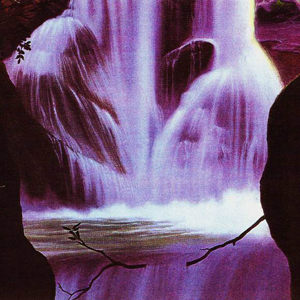 Recorded between California, Texas, and England, Qui Mal y Pense reissues one of Smokey Emery's (Daniel Hipólito) most complex and nuanced works, and the third in his Soundtracks for Invisibility series. Created entirely from hand manipulated open reel tapes, it is a lush, dramatic series of compositions that would work very well as a true soundtrack, but are just fine as stand alone music.
Recorded between California, Texas, and England, Qui Mal y Pense reissues one of Smokey Emery's (Daniel Hipólito) most complex and nuanced works, and the third in his Soundtracks for Invisibility series. Created entirely from hand manipulated open reel tapes, it is a lush, dramatic series of compositions that would work very well as a true soundtrack, but are just fine as stand alone music.
Give us an hour, we'll give you music to remember. This week we bring you an episode with brand new music from Softcult, Jim Rafferty, karen vogt, Ex-Easter Island Head, Jon Collin, James Devane, Garth Erasmus, Gary Wilson, and K. Freund, plus some music from the archives from Goldblum, Rachel Goswell, Roy Montgomery. Rubber ducks and a live duck photo from Matthew in the UK. Get involved: subscribe, review, rate, share with your friends, send images! |



 On their second LP, the duo of Scott Foust (Idea Fire Company) and Frans de Waard (Kapotte Muziek) chose to integrate more traditional instrumentation into their distinctive sound, namely bass guitar, overt synthesizer, and idiosyncratic rhythms. This was in a conscious attempt to pay tribute to one of both artists' favorite projects, Dome. While none of these six pieces sound directly like Graham Lewis & Bruce Gilbert's legendary project, that influence of bent post-industrial and playful absurdity resonates brilliantly throughout.
On their second LP, the duo of Scott Foust (Idea Fire Company) and Frans de Waard (Kapotte Muziek) chose to integrate more traditional instrumentation into their distinctive sound, namely bass guitar, overt synthesizer, and idiosyncratic rhythms. This was in a conscious attempt to pay tribute to one of both artists' favorite projects, Dome. While none of these six pieces sound directly like Graham Lewis & Bruce Gilbert's legendary project, that influence of bent post-industrial and playful absurdity resonates brilliantly throughout.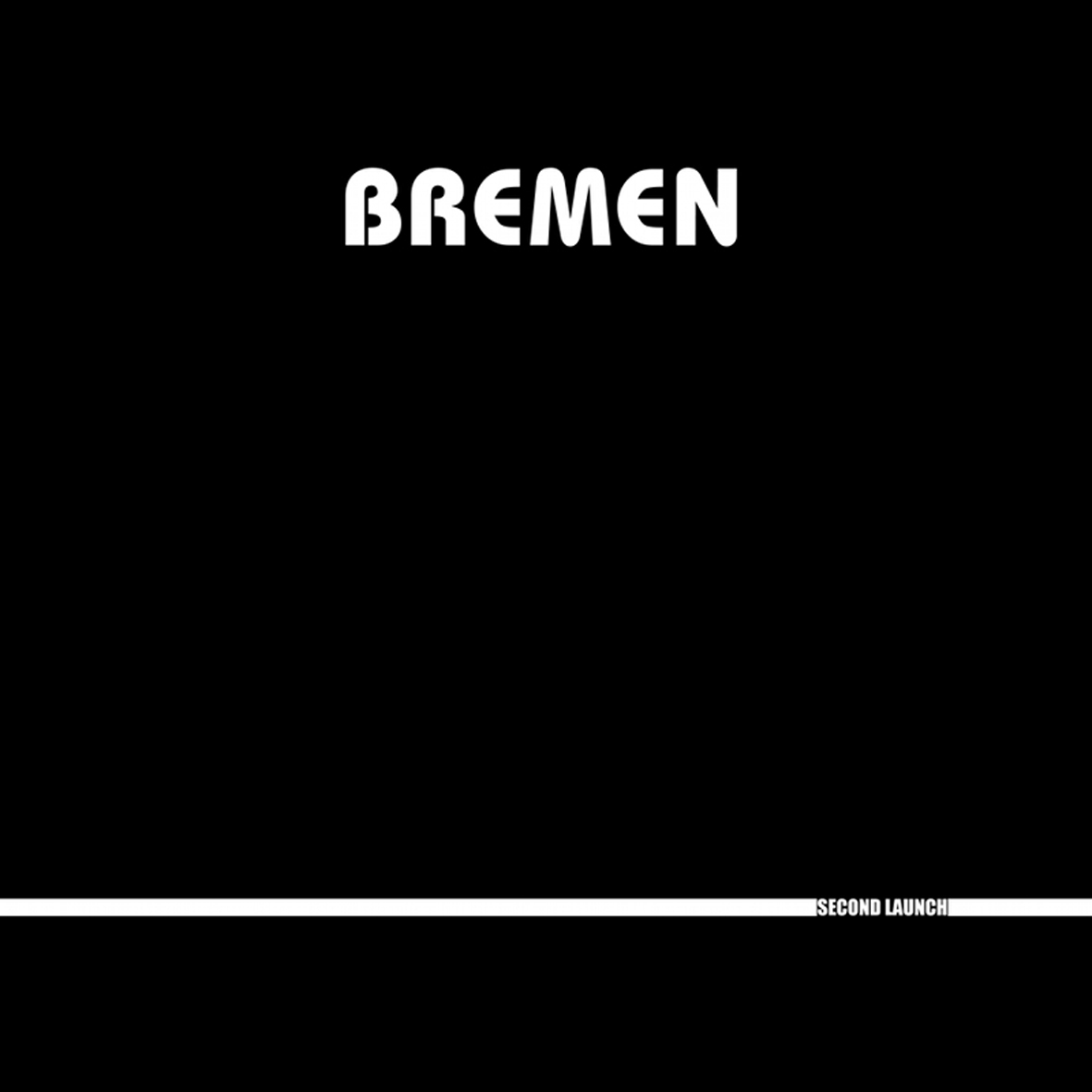 This sprawling double-album is the second release from this Swedish guitar/organ space-rock duo and it absolutely floored me. Built primarily from improvisations, Bremen largely avoids most of the jamminess, heavy-handedness, and self-indulgence that normally make me want to avoid the genre.  At their worst, they offer up a pleasantly languorous and simmering strain of post-rock, but the handful of highlights on Second Launch are nuanced, haunting, slow-burning perfection. The best moments are easily some of the finest music that I have heard this year even though the complete album perhaps errs a bit on the sleepy and too-long side.
This sprawling double-album is the second release from this Swedish guitar/organ space-rock duo and it absolutely floored me. Built primarily from improvisations, Bremen largely avoids most of the jamminess, heavy-handedness, and self-indulgence that normally make me want to avoid the genre.  At their worst, they offer up a pleasantly languorous and simmering strain of post-rock, but the handful of highlights on Second Launch are nuanced, haunting, slow-burning perfection. The best moments are easily some of the finest music that I have heard this year even though the complete album perhaps errs a bit on the sleepy and too-long side. I am fairly certain that this triple album is a lock for the most aptly named release of the year, as it is both unrelentingly melancholy and seemingly infinite (it clocks in at over two hours).  It is also excellent, as Dunn is one of the most reliably great ambient/minimalist drone artists.  While there is admittedly a somewhat exasperating interchangeability to these 19 songs, the sameness and epic length of The Infinite Sadness mostly work in Dunn's favor, as being sucked into an endless, dreamy loop can be quite a pleasant and mesmerizing experience in its own right.
I am fairly certain that this triple album is a lock for the most aptly named release of the year, as it is both unrelentingly melancholy and seemingly infinite (it clocks in at over two hours).  It is also excellent, as Dunn is one of the most reliably great ambient/minimalist drone artists.  While there is admittedly a somewhat exasperating interchangeability to these 19 songs, the sameness and epic length of The Infinite Sadness mostly work in Dunn's favor, as being sucked into an endless, dreamy loop can be quite a pleasant and mesmerizing experience in its own right.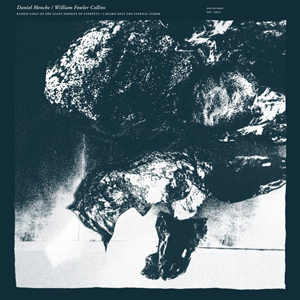 New Mexico's William Fowler Collins might have a smaller discography than others who work in similarly bleak moods and sounds, but the quality of each has been impeccable. These two new releases, one split with legendary noise artist Daniel Menche and the other a collaboration with Raven Chacon (Death Convention Singers), is up to the same standard, and conveys the barren and hostile, yet beautiful desert environment he hails from.
New Mexico's William Fowler Collins might have a smaller discography than others who work in similarly bleak moods and sounds, but the quality of each has been impeccable. These two new releases, one split with legendary noise artist Daniel Menche and the other a collaboration with Raven Chacon (Death Convention Singers), is up to the same standard, and conveys the barren and hostile, yet beautiful desert environment he hails from.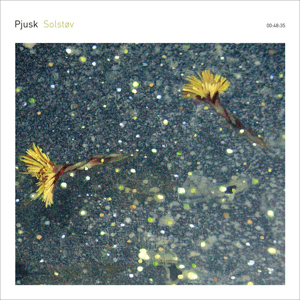 Considering its title is a hybrid of the Norwegian words for "sun" and "dust," I almost expected a drastic change from this duois usually frigid, frost-laden landscapes. Even more so upon finding out that the primary source material utilized by the duo was that of a trumpet, which to me seems like anything but a cold, isolationist instrument. There are some notable variations in the sound of Solst√∏v, but as a whole it remains a faithful addition to the Pjusk discography.
Considering its title is a hybrid of the Norwegian words for "sun" and "dust," I almost expected a drastic change from this duois usually frigid, frost-laden landscapes. Even more so upon finding out that the primary source material utilized by the duo was that of a trumpet, which to me seems like anything but a cold, isolationist instrument. There are some notable variations in the sound of Solstøv, but as a whole it remains a faithful addition to the Pjusk discography.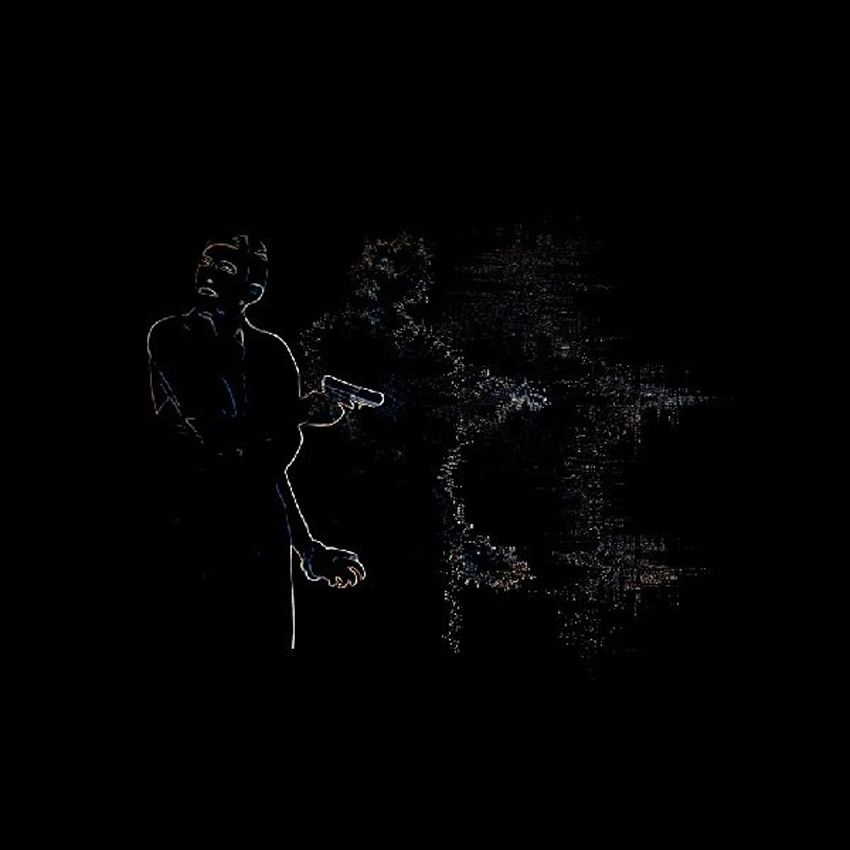 Shivers is a new jazz trio (of sorts) featuring Machinefabriek's Rutger Zuydervelt, though "anti-jazz" might be a more accurate descriptor given their willfully plodding rhythms and murky anti-virtuosity.  What the trio have going for them instead, however, is a distinctive strain of creepy, broken-sounding sci-fi brooding, which makes a great deal of sense for a band named after an early David Cronenberg film.  Appropriately, my opinion of this debut closely mirrors my opinion of almost every Cronenberg film that I have ever seen: an inspired aesthetic and some cool ideas, but it seems like it probably could have been a bit better.
Shivers is a new jazz trio (of sorts) featuring Machinefabriek's Rutger Zuydervelt, though "anti-jazz" might be a more accurate descriptor given their willfully plodding rhythms and murky anti-virtuosity.  What the trio have going for them instead, however, is a distinctive strain of creepy, broken-sounding sci-fi brooding, which makes a great deal of sense for a band named after an early David Cronenberg film.  Appropriately, my opinion of this debut closely mirrors my opinion of almost every Cronenberg film that I have ever seen: an inspired aesthetic and some cool ideas, but it seems like it probably could have been a bit better.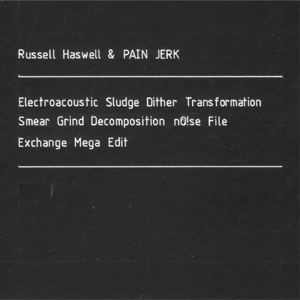 A collaboration between these two artists makes perfect sense, given how both have carved out their individual niches working with rhythmic sounds in non-traditionally rhythmic situations. Russell Haswell has worked overtly in both realms, and his recent work with power electronics legends Consumer Electronics has him going as far as conventional techno beats. Pain Jerk's Kohei Gomi, on the other hand, has worked mostly as a harsh noise artist, but one of the few that has shaped harsh noise outbursts into ersatz rhythms. Split into two discs (one edited by Haswell, the other by Gomi), this is a sprawling, brilliant mass of sound culled from solo recordings and live performances that stand out strongly amongst both their other work.
A collaboration between these two artists makes perfect sense, given how both have carved out their individual niches working with rhythmic sounds in non-traditionally rhythmic situations. Russell Haswell has worked overtly in both realms, and his recent work with power electronics legends Consumer Electronics has him going as far as conventional techno beats. Pain Jerk's Kohei Gomi, on the other hand, has worked mostly as a harsh noise artist, but one of the few that has shaped harsh noise outbursts into ersatz rhythms. Split into two discs (one edited by Haswell, the other by Gomi), this is a sprawling, brilliant mass of sound culled from solo recordings and live performances that stand out strongly amongst both their other work.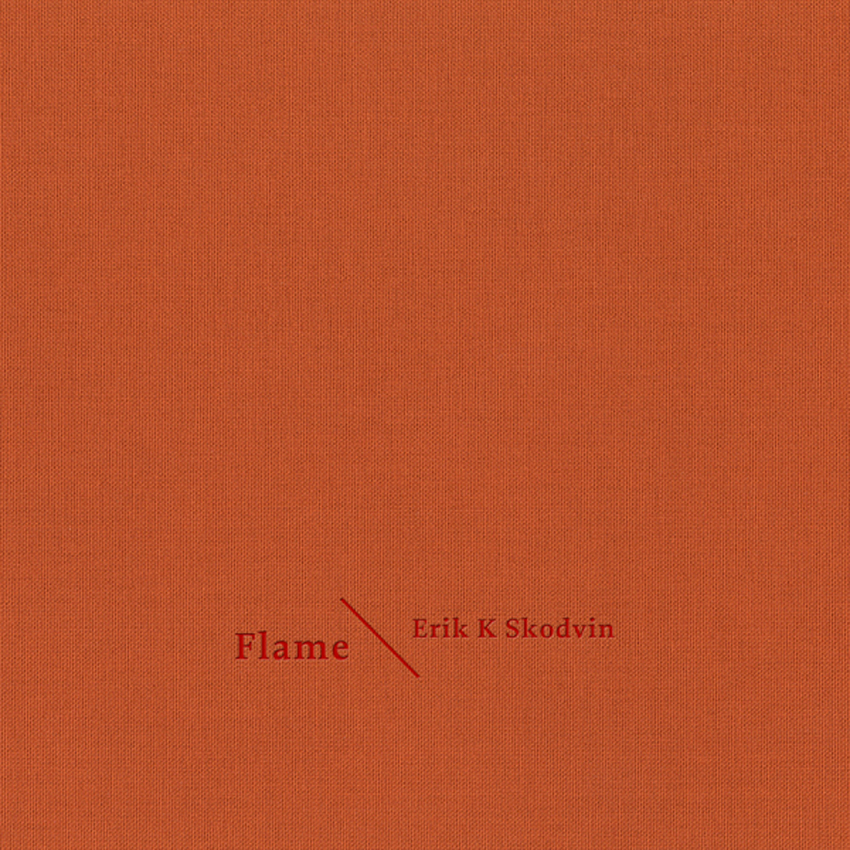 Flame is only Skodvin's second solo album under his own name (following 2010's Flare), but he has long been quite a prolific fellow in both his Svarte Greiner solo guise and as one-half of Deaf Center.  While I do not yet have a comprehensive command of Erik’s entire oeuvre, this latest effort seems like a significant detour from the bleakly heavy drones that I normally associate with him.  Flame is still dark, of course, but it is more of a gently smoldering darkness than a crushing, oppressive one.  More importantly, this is a wonderful album, as Skodvin's lighter touch, clarity, and increased use of space combine to bring his excellent ideas into sharp relief.
Flame is only Skodvin's second solo album under his own name (following 2010's Flare), but he has long been quite a prolific fellow in both his Svarte Greiner solo guise and as one-half of Deaf Center.  While I do not yet have a comprehensive command of Erik’s entire oeuvre, this latest effort seems like a significant detour from the bleakly heavy drones that I normally associate with him.  Flame is still dark, of course, but it is more of a gently smoldering darkness than a crushing, oppressive one.  More importantly, this is a wonderful album, as Skodvin's lighter touch, clarity, and increased use of space combine to bring his excellent ideas into sharp relief.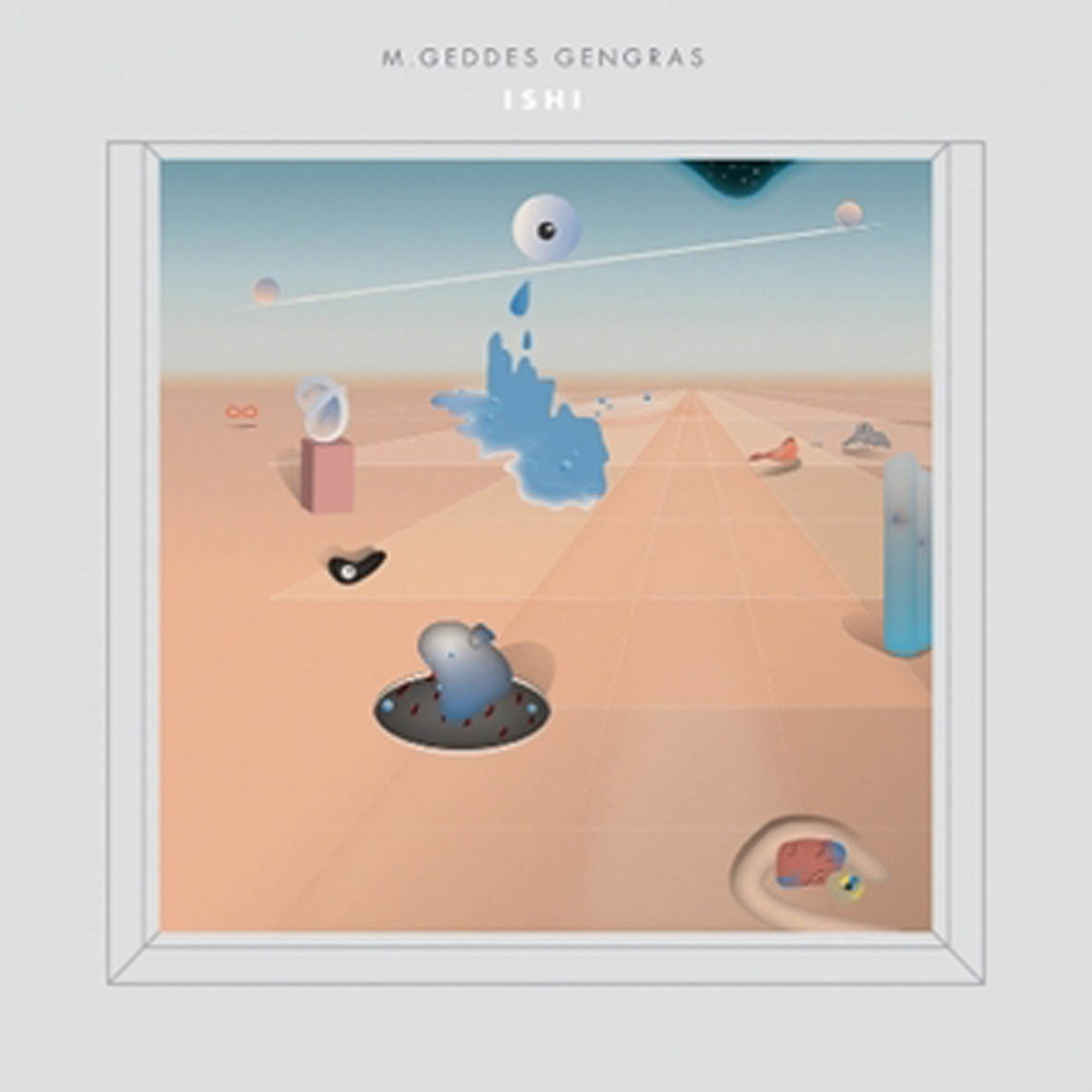 Last year's Collected Works Vol. I – The Moog Years was one of my favorite albums in recent memory, so I was very much looking forward to this suite of entirely new modular synth pieces from Gengras.  Naturally, my anticipation turned out to be justified, but the meditative, pastoral Ishi has a radically different feel than its moodier, more haunting predecessor.  While I happen to vastly prefer moodiness to serenity, Geddes' compositional talents and intuitive understanding of both space and pacing ensure that Ishi is still a characteristically enjoyable effort.
Last year's Collected Works Vol. I – The Moog Years was one of my favorite albums in recent memory, so I was very much looking forward to this suite of entirely new modular synth pieces from Gengras.  Naturally, my anticipation turned out to be justified, but the meditative, pastoral Ishi has a radically different feel than its moodier, more haunting predecessor.  While I happen to vastly prefer moodiness to serenity, Geddes' compositional talents and intuitive understanding of both space and pacing ensure that Ishi is still a characteristically enjoyable effort.
